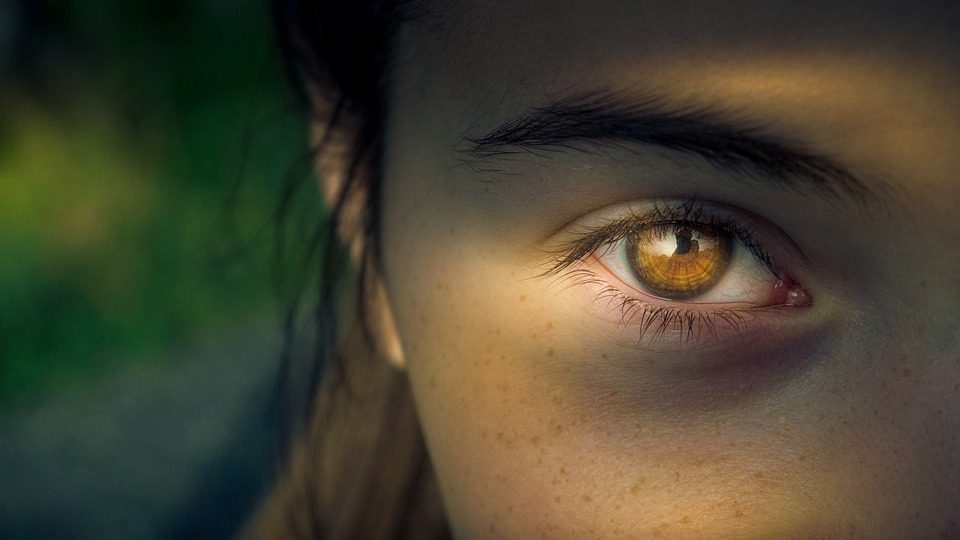
Inner child work is a powerful psychological spiritual practice that allows us to tune into the child-like aspect that we all have, and start to heal our deep-seated childhood wounds.
On the flip-side, inner child work can open up us back up to the awe and wonder of the world that we gradually lose as we grow older.
By becoming aware of our inner child, we see the underlying cause of so much of our unconscious behaviors as adults, and can begin to shift them accordingly.
Inner child work also means becoming more disciplined, calm and motivated as adults, sometimes which we might not have seen as children. Inner child work also gets us in touch with our mature adult self.
If you have never done inner child work before, or aren’t sure if you’re doing it right I want to show you how to develop a consistent practice. This is a process of reparenting where you become aware of this fragmented aspect of yourself and can begin to integrate it.
What Is The Inner Child?

We all have an inner child within us, it is the part of our psyche that retains that childlike sense of wonder, innocence and creativity. Our inner child can also contain our fears, traumas and natural gifts that we have repressed in adulthood.
When our needs are not met in childhood we form this shadow (unconscious) side by repressing this need altogether. When we reach adulthood we search out ways to meet this need in indirect ways; though other people, romantic relationships and unhealthy habits.
The inner child is the part of us that resurfaces in adulthood when we feel our needs are not being met by another person. When we feel unheard or unseen it can trigger uncomfortable memories from childhood, and make us act in a way that doesn’t represent our adult selves.
We place the responsibility of meeting our needs onto others wholeheartedly. In relationships there is nothing wrong with having needs – we all do – where it becomes unhealthy is where we are over-reliance, or expect others to simply know what we want, without ever making it clear or vocalizing it.
I want to go over an exercize that will provide a safe space to work with your inner child. Be aware that this is intense work – you may uncover wounds you haven’t addressed in decades – so proceed only when you are ready.
9 Signs Your Inner Child Needs Healing

- You blow up easily in confrontation
- You become quickly irritated, angry, and frustrated
- You often feel ignored or misunderstood
- Your relationships feel like battles
- You’re a people pleaser and lack strong boundaries
- You aren’t comfortable stating your needs
- You have trouble expressing emotions
- You excessively criticize and put yourself down
- You avoid conflict completely or gravitate towards it
This list is only to be used as a rough guide, as the ways our childhood can affect our adulthood patterns is endless. There are probably some examples on this list that instantly stick out to you – those are the ones you focus on.
All of these signs come back to one root, which is a sense of disempowerment. The power we felt deprived of in childhood that translates to feeling like you aren’t as mature or self-directed as you’d wish to be.
We ALL have some level of inner child healing to do, although it is more apparent for some. Inner child healing isn’t only necessary when we have experienced overt trauma, as childhood wounds can also manifest in many subtle but insidious ways.
5 Ways To Heal the Inner Child
Observe Your Triggers

One of the quickest ways to identify and begin healing your inner child is through observing your triggers. A trigger is something seemingly mundane that causes you to have a heightened negative emotional response.
Our triggers show us where there is still healing to do. They also show us where our boundaries lie, and what are needs are so that we can communicate them better. Dealing with triggers is all about awareness first, and then clear communication.
For example, one of my biggest inner child triggers is people moving my stuff without asking. Through inner exploration I found this trigger highlighted a deep scarcity mindset, I was always worried that the little I had would be taken from me.
I found that even when people had good intentions I would become hyper-vigilant and overprotective, when there was really no need to be. I would immediately go into a panicked state, feeling like my small semblance of order had been messed with.
To heal this I had to start placing firmer boundaries, while discerning when and where these were actually necessary. Then I had to address the deeper wound – which was a deep lack mindset. Any time I started thinking in terms of lack I would gently redirect myself to a feeling of abundance.
When you find yourself in a situation where you are feeling irritated, ignored, or dismissed ask yourself “What does this remind me of?” This simple but powerful question will get you thinking about how your present behaviors are being influenced by your past.
Inner Child Meditation

I use a variation of this meditation for past life integration and connecting with my shadow self. There’s a power in pairing visualization with intention, and creating a mental space wherein heavy emotions can be safely released.
This meditation will allow you to release those emotions in a safe environment. Before you start this meditation/visualization it can be helpful to reference a childhood photo of yourself to get the image fresh in your mind.
Start by visualizing yourself in a peaceful room, forest clearing or some other space that makes you feel comfortable. Incorporate all five senses as best as you can, noticing the sights, sounds and feelings that flow over you as you take in this environment.
In the center of this space imagine a bench with two chairs at either side facing each other. This is where you and your inner child will sit down and converse. Once you have built this space up in your mind you can move onto the next step.
Visualize your child self (inner child) either walking up a pathway or through a door into the space you are in. Don’t worry if the visualization isn’t perfect yet, just do the best you can.
Inner Child Affirmations:
Then come face to face with your inner child and hug them tightly. You can recite some affirmations such as: ⠀
- “I am here”
- “I see you”
- “I’m listening”
- “You are safe now”
Spend as much time as you need. Comforting, affirming, conversing or giving advice. At this point you can allow any heavy childhood memories and experiences to surface. You may feel angry, upset, you may even cry. Just let it all flow and be released from your system. ⠀
You can then visualize your inner child filling with white light. Feel them dissolving into you, becoming fully integrated. When you come back to yourself just take a few minutes to process it all, and then write your experience down. ⠀
The first time you try this exercize the visuals will probably be unclear, and you will likely have trouble maintaining the space in your mind. Try your best and work with what you’ve got. With practice this will become as easy as walking into a physical room.
Treat this space just as you would any sacred space you work in. As you revisit it in future sessions you’ll start building up a familiar energy here, one of complete safety and security. This is an inner sanctuary you should feel comfortable retreating to.
If you would like to learn more, there is a whole section on inner child work in my energy guidebook.
Revisit What You Loved as a Child
Another key way to heal the inner child is to look at the things you enjoyed doing as a child but stopped yourself from perusing as an adult.
There is so much fun, joy and creative energy in the inner child that goes untapped as an adult. Many people find that what they are missing is a creative outlet. This could be drawing, painting, dancing and so on.
We don’t have to take on this pursuit as a full time job (we probably don’t have the time) but we can carve out more time to focus on these things, and make a conscious effort and set aside some time consistently.
Cultivate discipline
On the flip side, what we are often missing as a child is discipline and structure in the more traditional ways. Becoming that mature, disciplined adult you’ve always wanted to be is one of the main ways we heal the inner child.
Many of us grew up in chaotic households where we never knew where we stood. What we didn’t realize was that our parents were also growing in their own ways, they also had an inner child that they hadn’t addressed.
We might have found that they placed this immaturity or lack of responsibility onto us. We had to take care of their emotions, fulfil responsibilities they were not up to, or portray a certain image in order to protect theirs.
- Reassess your daily habits
- Set solid short and long term goals
- Commit to our word
- Practice shadow work
A lot of this is about building self-trust. When we grow up in environments like this it’s easy to lose trust in ourselves and our instincts. By cultivating a level of discipline we can come to our inner child with solid support, we become the adult figure we needed when we were young.
Signs Your Inner Child is Healing

- You are more introspective and less reactive
- You are more aware of your triggers
- You communicate clearer
- You aren’t as influenced by outside judgement
- You can set clear boundaries
- Your self love is growing
- You aren’t afraid to be playful
- You are filled with a renewed sense of awe
Remember that the inner child is not just a wounded aspect, it also contains the positive beliefs and habits we picked up in childhood. The inner child is also the aspect of ourselves that is filled with endless awe and playful energy.
When you approach inner child healing make sure you embrace both the light and dark sides. The idea is to bring balance to all aspects of yourself, and integrate those parts you have repressed. Take things slowly and do the best you can – this can be intense work.
In conclusion
Inner child work doesn’t have to be this wishy washy thing, in fact a lot of the work involves cultivating a deeper level of maturity and responsibility as adults. As ironic as this might seem, it’s exactly what any child needs, and in turn our inner child.
The inner child doesn’t simply mean immaturity, and having an inner child or witnessing it in day to day life doesn’t mean you aren’t progressing. It simply means, that aspect of yourself is there and needs attention. It’s a natural part you.
We’re always going to see our inner child manifest in different ways, and we’d hope to keep in touch with the joy and creative that comes with that too. However, as you heal the inner child you’re going to see that it has less control over your interpersonal relationships, and ultimately the direction of your life.